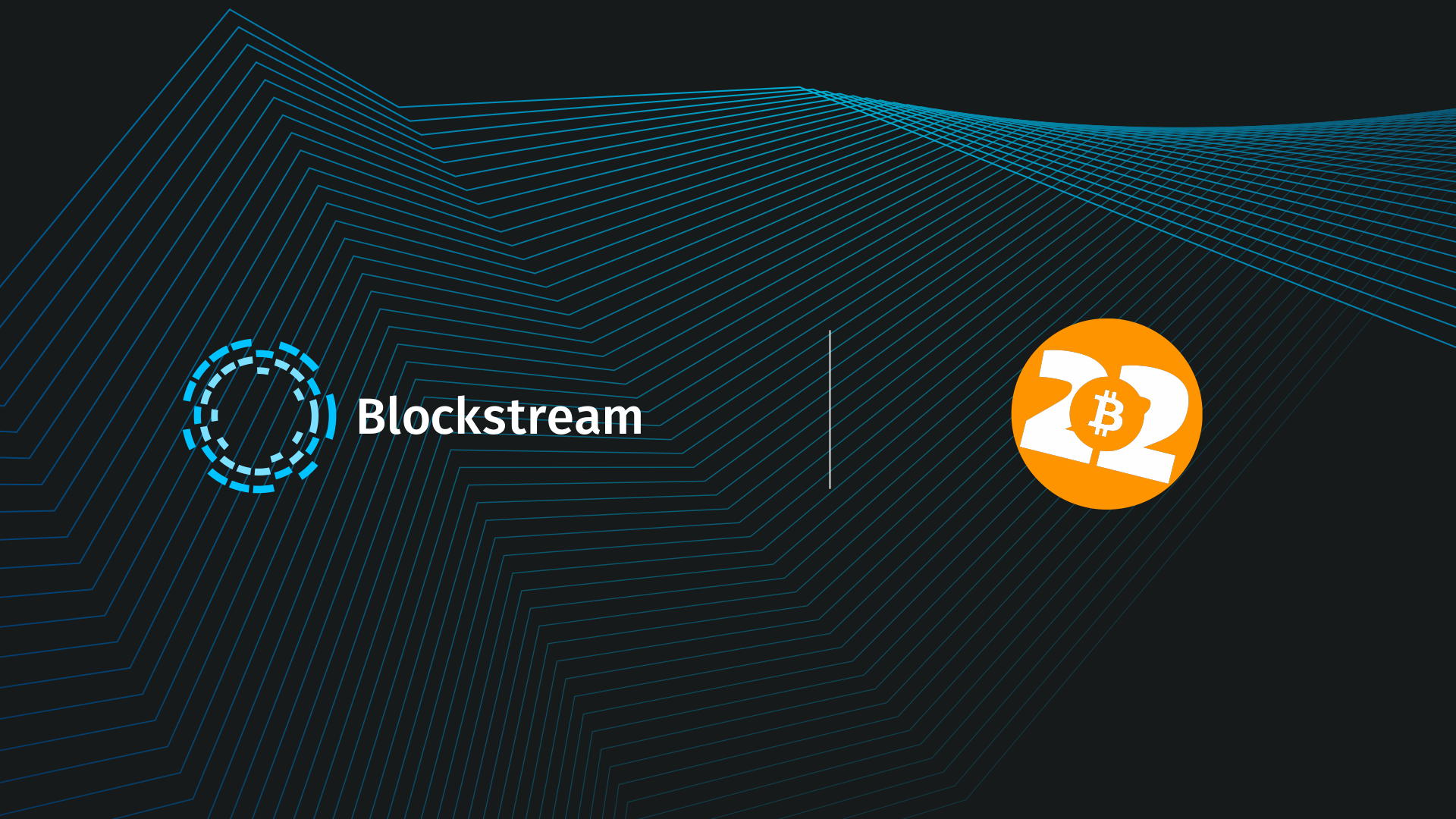Now that your Miami sunburn has faded and your hearing has recovered (thank you, deadmau5), we thought it appropriate to reflect on Bitcoin's largest gathering, Bitcoin 2022.
This year, we had a number of Blockstream software engineers and cryptographers headline the Open Source stage to discuss their work on the leading-edge of Bitcoin, covering everything from the latest signature schemes to new layer-2 protocols like MiniMint that bring additional security and privacy capabilities to Bitcoin.
Members of the team also attended the Liquid Members Meetup, where new dev libraries and opcodes were discussed, in addition to the network's recent Taproot and Dynamic Federations upgrades.
Among the biggest announcements of the conference was from Blockstream CEO Dr. Adam Back, who revealed Tesla would be providing the solar and battery infrastructure for our 100% renewable energy Bitcoin mine with Block, Inc.
Let's start here.
Bitcoin is the Answer to Renewable Energy Adoption
One of the project's highlights is its publicly accessible dashboard that will share real-time metrics such as power output, bitcoin mined, and other raw data, serving as a case study of how Bitcoin mining can improve energy production sites' economics and incentivize renewable energy use around the world.
Construction is currently underway with Tesla's photovoltaics and Megapack battery equipment set to drive 30 petahashes per second of mining hardware at the facility. We are aiming for the project to be completed later this year.
The open-source mine with Block and Tesla is just one example of how Bitcoin mining can fund zero-emission power infrastructure and help drive innovation. We are also working with Aker, Macquarie, and others to pursue alternative and renewable energy Bitcoin mining and look forward to sharing more on these efforts soon.
Lightning Matures
Before the conference, c-lightning underwent a name refresh to officially become Core Lightning (CLN). The new name better communicates our focus on Lightning specification, interoperability, and staying a community-driven, open-source implementation.
Several members of the CLN team joined panels on the Open Source stage to discuss a range of topics concerning the Lightning Network today. For those who missed the three-day event, here's a complete list of Lightning-focused panels featuring Blockstreamers:
LSPs & Liquidity
Lisa Neigut joins Michael Tidwell, Roy Sheinfeld, João Almeida, and Ryan Gentry to discuss LSPs (Lightning Service Providers), inbound liquidity, difference in liquidity provision models, how Taproot transforms Lightning, and the new features BOLT12 brings to the network.
The Future of Lightning Development
Christian Decker, alongside Matt Corallo and Hannah Rosenberg, talks about Lightning experimentation and tooling, improving Lightning app UI, future Lightning infrastructure like Greenlight, and the BOLT spec process.
Bitcoin & Lightning Node Roundtable
Jonas Nick, Matt O'Dell, Keagan Mclelland, Rootzoll, and S2L1 dive into Bitcoin and Lightning nodes, covering the major node projects and packages and the importance of FOSS, Lightning interoperability and migration between nodes, and the biggest concerns facing node running today.
Trade-offs of Lightning Implementations
Christian Decker joins a panel hosted by fellow Blockstreamer Vivek Kasarabada alongside Matt Corallo and Olaoluwa Osuntokun to dissect the leading Lightning implementations: CLN, LDK, and LND, and discuss each team's unique approach to Lightning and scaling Bitcoin.
Lightning Privacy
Lisa Neigut shares the stage with Evan Kaloudis, Anthony Ronning, and Shinobi to weigh the pros and cons of payment-level privacy on Lightning, trampoline nodes, privacy concerns with the gossip protocol and on-chain UTXOs, and how BOLT12 can obfuscate centralized node services from leaking your payment data.
Driving Cryptographic Innovation
Our cryptographers are on the bleeding-edge of Bitcoin research and development, driving new signature schemes and scripting languages that support the broader Bitcoin ecosystem.
Many of these new cryptographic systems were on display during panel discussions, including Taproot, Schnorr signatures, and MiniMint.
Signatures
Andrew Poelstra, Jonas Nick and Vivek Kasarabada team up with Nadav Kohen to chat about the security and privacy benefits of new digital signature schemes like Schnorr, foiling rouge key attacks through rerandomization, and reviewing different schemes like MuSig2, FROST, and blind signatures.
Covenants
Lisa Neigut and Sanket1729 join Michael Tidwell, Jeremy Rubin, and Burak Keceli in defining covenants, the different proposals, their trade-offs, and the potential security concerns with recursive covenants.
The Future of Bitcoin Privacy
Researcher Eric Sirion sits down with Casey Rodarmor and Aaron van Wirdum to discuss Chaumian e-cash, federations and community-led custody, and the future of Bitcoin privacy and scalability through MiniMint.
State of Bitcoin
The fundamentals of Bitcoin, i.e., its permissionless nature, scarcity, security, bearer qualities, unseizability, robustness, etc., remain intact and stronger than ever.
Despite a downturn in Bitcoin's price, mining hashrate, which secures the network, continues to set record highs. More companies are opting to mine bitcoin to add to their balance sheet, bringing new capital into the space and unlocking innovation. Increased competition is also happening, with several companies, including our own, announcing forays into ASIC manufacturing.
The adoption of layer-2 protocols like Liquid and Lightning for scalability and new functionality mirrors that of Bitcoin, with network capacity and ecosystem growth reaching all-time highs. Payment channels on the Liquid Network have nearly tripled yearly to just shy of 90,000, and decentralized infrastructure is actively being built through solutions like collaborative channel opens, liquidity ads, and PeerSwap.
Despite short-term volatility, Bitcoin is well-positioned for the next leg of global adoption. Strong network metrics and market demand coupled with a robust consensus layer for security and privacy upgrades make the future brighter than ever for a HODLer.
